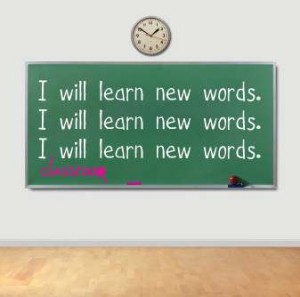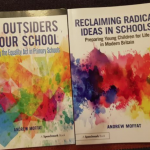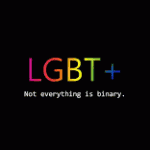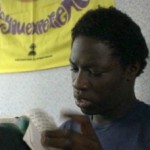It is worth remembering that language is important when dealing with people’s experience. There are words and terms that have a particular resonance for people. It is impossible to give hard and fast rules about these words and language changes.
Allies People who don’t identify as LGBT who wish to be seen as supporting the cause and challenge all forms of discrimination and behave inclusively.
Asylum seekers are pupils whose families are seeking refugee status (they have applied for asylum), possibly because of war or human rights abuse. Pupils may be unaccompanied minors in the UK.
Bisexual A sexual orientation in which an individual is sexually attracted to both males and females. This attraction may not be equal, so the individual may feel stronger feelings for, or have feelings more often for one gender instead of the other.
Coming Out The process by which someone acknowledges that they are Gay, Lesbian or Bisexual and chooses to be open with others about it. Sometimes people refer to ‘Coming Out of the Closet’.
Characteristic A distinguishing feature attribute of a person. Characteristics can be genetic (ethnicity/disability), social (marital status/disability) or physical (age/disability): (see also Protected Characteristic and Combined Characteristic)
Closet (in the) is the term used to describe lesbians, gay men and bisexuals who are not open about their sexual orientation
Combined characteristics It is recognised under the Equality Act that a person may be discriminated against due to combined characteristics such as receiving both racism and homophobia.
Discrimination Treating, considering or distinguishing a person based on the group, class, or category to which they belong, rather than on individual merit. “Discriminatory behaviours take many forms, but they all involve some form of exclusion or rejection” United Nations
Discrimination (Direct) When a person is intentionally treated less favourably than others in comparable circumstances because of a special characteristic such as sex, race or disability.Direct discrimination is unlawful.
Discrimination (Indirect) When a provision or practice is applied equally to all but unintentionally has a different impact on people so that a person or group are at a disadvantage as a result.Indirect discrimination is unlawful.
Disabled person Someone who has a physical or mental impairment which has a substantial and long-term adverse effect on his or her ability to carry out normal day-to-day activities (DDA 2005)
Diversity awareness is about including everyone; valuing differences; and harnessing differences in individuals to the benefit of both the organisation and the individual, by allowing people with different perspectives and views to use their unique blend of skills and character to improve the quality and performance any institution.
Medical Model (of Diversity) Adapted from the disabled movement – nothing about us without us The emphasis is on dependence, backed up by the stereotypes of difference that call forth pity, fear and patronising attitudes. Usually the focus is on the “impairment”, such as our age, race, gender, gender identity, sexual orientation, religion or belief, or disability, rather than the needs of the person. The power to change us seems to lie within the medical and associated professions, with their talk of cures, normalisation and science. Often our lives are handed over to them.
Social Model (of Diversity) Approach to difference/impairment sees the problem as society’s barriers, rather than the person’s condition, thereby allowing people perceived as different or impaired to lift the blame from their shoulders and place it squarely onto society’s. The Legislation ie the Equality Act is coming from the social model concept placing the responsibility on the institutions to make sure they are accessible to the protected characteristics. The social model empowers people to challenge society to remove those barriers
Equality The concept that all people should be treated as equals and have the same political, economic, social, and civil rights.
Equality and Human Rights Commission – previously the Commission for Racial Equality (CRE) The CRE was set up under the 1976 Race Relations Act. It is funded by a government grant but works independently to perform its duties in relation to the Act. It can provide legal advice and assistance and investigate companies and organisations where there is evidence of racial discrimination. It is now known as the Equalities and Human Rights Commission after the merger of three equality commissions: Commission for Racial Equality (CRE), Disability Rights Commission (DRC) and the Equal Opportunities Commission (EOC)
Gay The term is used to describe a man or woman who is emotionally/physically attracted to someone of the same gender.
Harassment When a person’s dignity is violated or behaviour creates an intimidating, hostile, degrading, humiliating or offensive environment for them, on the grounds of a relevant equalities characteristic eg sex, race. Harassment is unlawful.
Hate crime Hate crime is any criminal offence committed against a person or property that is motivated by hostility towards someone based on their disability, race, religion, gender identity or sexual orientation.The Association of Chief Police Officers (ACPO) and the Crown Prosecution Service have a nationally agreed definition of Hate Crime. Hate crimes are taken to mean any crime where the perpetrator’s hostility or prejudice against an identifiable group of people is a factor in determining who is victimised. This is a broad and inclusive definition. A victim does not have to be a member of the group. In fact, anyone could be a victim of a hate crime
Health Inequality Refers to difference in the health outcomes and quality of health and health care across racial, ethnic, sexual orientation and socio-economic groups compared with the overall population.
Heterosexual The term refers to people who are attracted emotionally or physically to members of the opposite gender.
Heterosexism The term refers to the assumption that all people are Heterosexual and that Heterosexuality is the norm, thereby dismissing or devaluing Homosexuality.
Heternormativity assumes that everyone is white, able bodied, young, middle class, heterosexual, male and Christian. Most barriers that affect/disadvantage, people on the grounds of gender, gender identity, sexual orientation, race, age, religion and belief, class and disability, are created by oppressive social systems. This is however not always recognised and society blames the person they see as not ‘normal’.
Identity Who we are rather than what we do (although our identities heavily influence our actions.
Institutionalised Heterosexism
is a system that has embedded within it unfair discrimination against, and the oppression of lesbians, gay men and bisexuals. It is often a subtle form of oppression which reinforces realities of silence and invisibility for gay and lesbian youth.
Internalised Homophobia
The fear and self-hate of ones’ own homosexuality or bisexuality that occurs for many gay and lesbian individuals who have learned negative ideas about homosexuality throughout childhood. Once gay and lesbian youth realise that they belong to a group of people that is often despised and rejected in our society, many internalise and incorporate the stigmatisation of homosexuality and fear or hate themselves.
Homophobia The irrational fear, hatred, intolerance or prejudice towards LGB people. It can manifest itself in verbal, emotional, physical and sexual abuse against Lesbians, Gay men and Bisexual people.
A Homophobic incident is any incident which is perceived to be homophobic by the victim or another person. That is directed to impact upon those known or perceived to be lesbian, gay, bisexual or trans people.
Homosexual A generic term for someone attracted physically/emotionally to someone of the same sex. It can refer to both Lesbians and Gay men. The term ‘Homosexual’ should be avoided altogether as it was created to describe same-sex attraction as a mental disorder and is seen by some as insulting and offensive. The preferred term is ‘Lesbian, Gay and Bisexual’ or ‘LGB’ as it is the term that most LGB people identify with.
Institutional Prejudice Institutionalised oppression is the collective failure of an organisation to provide an appropriate and professional service to people because of their race, gender, gender identity, sexual orientation, religion or belief, age, ability or class. ( adapted from the Stephen Lawrence report)
LGB Abbreviation of Lesbian (L), Gay (G) or Bisexual (B). Commonly used term when discussing, describing, defining or identifying communities or parts of the population who identify as L, G or B. Sometimes T for Trans is also added to form LGBT. You may also see QQIA added this would stand for Queer Questioning Intersex and Allies
Lesbian The term used to describe a woman who is emotionally/physically attracted to women.
Oppression The exercise of authority or power in a burdensome, cruel, or unjust manner. It can also be defined as an act or instance of oppressing, the state of being oppressed, and the feeling of being heavily burdened, mentally or physically, by troubles, adverse conditions, and anxiety.
Prejudice A preconceived belief, opinion or judgment toward a group of people characterised by their race, social class, gender, ethnicity, sexual orientation, age or religion. It can also mean having an opinion about something without knowing anything about it.
Pride Pride in this sense is an affirmation of one’s self and the community as a whole. The modern “pride” movement began after the Stonewall riots in 1969. In Britain we have many Pride events around the country. London Pride is usually the first Saturday in July.
Protected Characteristics Term used in the Equality Act to refer to nine characteristics which are protected under from discrimination under the law. Detail info here. To read about the 9 protected characteristics, read about the Equality Act under ‘The Big Picture’.
Queer A person who does not want to have their sexual orientation reduced to an either/or term, such as heterosexual or homosexual. Lots of different people identify as queer (including people who are heterosexual), and many of them think that a binary gender system is too limiting. The term “queer” is often used by and about people who are traditionally seen as lesbian or gay. The term has also been used in a derogative way so not all lesbian and gay people are comfortable with it.
Questioning Describes a person who is literally questioning their sexuality and have not declared themselves to either LGB or heterosexual.
Rainbow Emblem of Gay pride, most commonly displayed in a flag format sometimes referred to as a “freedom flag”. Most often displayed with the red stripe at the top followed by stripes of orange, yellow, green, blue and purple. These stripes represent the diversity in the LGBT community.
Section 28 (Now repealed) Local Government Act – 1988 to 2000 in Scotland, 2003 in England and Wales: Also known as Section 2A, amended the L0cal Government Act 1986, which was intended to restrict local authorities’ political publicity. The new Section was meant as an additional restriction on local authorities’ powers to campaign or publicise. It also restricted the local authorities’ influence on the teaching in maintained schools. It stated that:
1) a local authority shall not –
a) intentionally promote homosexuality or publish material with the intention of promoting homosexuality;
b) promote the teaching in any maintained school of the acceptability of homosexuality as a pretended family relationship.
2) Nothing in the above shall be taken to –
a) prohibit the doing of anything for the purpose of treating or preventing the spread of disease or
[an amendment in 2000]
prevent the head teacher or governing body of a maintained school, or a teacher employed by a maintained school, from taking steps to prevent any form of bullying.
There were never any prosecutions under the act but the effect was profound as people did not understand it. Self censorship was widespread and particularly in schools. It was repealed in Scotland in 2000 and in England and Wales in 2003.
Sex Either male or female based on physical sexual characteristics. There is division amongst people, some prefer this definition, others prefer the use of gender to describe genetic, physical sexual characteristics. We don’t think its appropriate to say one is better than the other. Although we prefer to use gender, because its better. The sex word always makes people all confused when you work in the education sector.perhaps its a very Victorian attitude and a word that will never make us think of anything else than the act itself.
Sexuality Refers to how people experience the erotic and express themselves as sexual beings. It has many aspects, from the biological drive that exists in all species to sexual intercourse and sexual contact, from feelings and emotions between individuals to cultural and ethical beliefs.
Sexual Identity Describes the ways a person defines themselves sexually. Sexual identity is not based solely on sexual desires, but on how a person understands themselves in relation to others and the world and may or may not relate to their actual sexual orientation. For example, a person may have sex with members of the same gender without identifying as Lesbian, Gay or Bisexual.
Sexual Orientation Refers to a person’s emotional, romantic, and/or sexual attractions for the same or opposite gender partners.
Stereotype A fixed, commonly held notion or image of a person or group, based on an oversimplification of some observed behaviours or traits. In the main stereotypes are negative.
Stonewall Instead of backing down to unconstitutional raids by New York City Police Department, gay people in local bars fought back. While it was a violent situation it also gave the underground community the first sense of communal pride in a very well publicized incident. From the annual parade that commemorated the anniversary of the Stonewall riots began a national grassroots movement.
Straight is a colloquial term for people who are heterosexual.
Victimisation When a person is treated less favourably because they have taken action in respect of discrimination eg making a complaint. Victimisation is unlawful.
Visibility Describes issues arising from the paradox that whilst current language and social structures are lacking in their ability to describe and therefore make visible some people’s gender identities – and that these people remain unwillingly invisible, for others the goal is to move towards being able to be accepted within currently recognised definitions.







